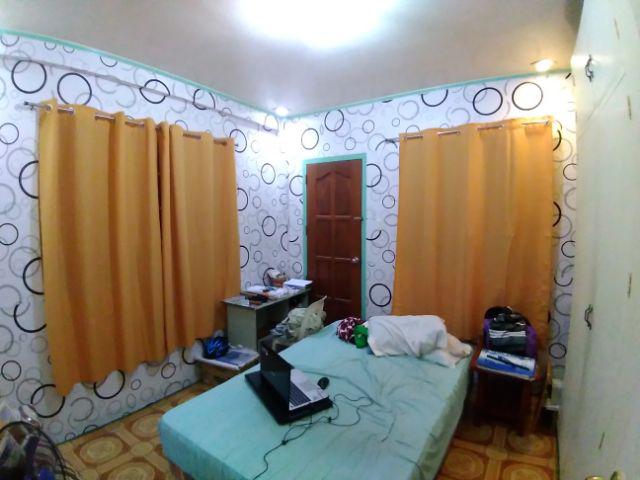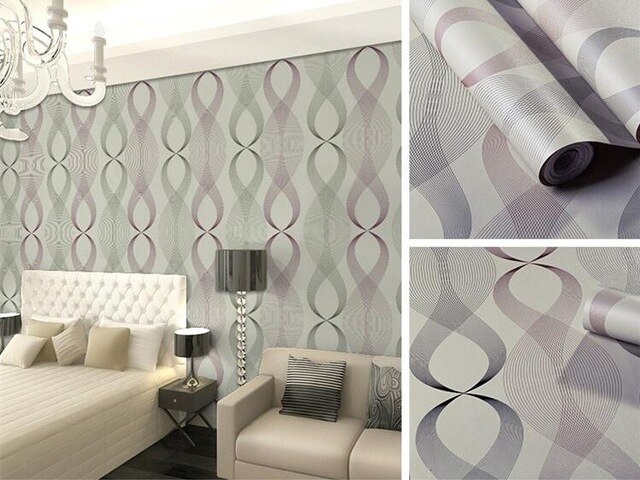
Attaching your Wallpaper Yourself
The cheapest way to redesign your room is of course the one where you renovate on your own. In this article I will show you in 5 steps how you can wallpaper your wall independently.
Step 1: Preparing the room
First all the walls have to be exposed. This means that furniture and decorative items must be removed from the room. If the apartment or house does not allow it, larger shuttercraft furniture can also be placed in the middle of the room, but must then be covered with foil. You should note that the first step is to wallpaper the ceiling, so it must be possible to work without obstacles. When moving cabinets, first empty the drawers to reduce the risk of injury.
Before you apply the new wallpaper, the old wallpaper must be removed, if available. To do this, you must first switch off the electricity in the room, because you must work with water. If there is not enough daylight available, use a battery-powered spotlight or a spotlight with extension cable. The frames of the sockets and switches must then be removed. The open areas must be well taped so that no water can get to the wiring. If the ceiling is also to be wallpapered, you should remove the lamp attachment to make work easier.
Step 2: Prepare the wall
Before you put on the new wallpaper, check the walls for different aspects. These include the absorbency, which can be seen with a simple water test. As far as humidity is concerned, there should be no damp spots when you start wallpapering. In this case, let the wall dry out first. Finally, the wall should be clean and have no cracks or holes. If there are any, you should fill them either with a ready-made filler or with filler powder.
After the wall has been examined and repaired, the wallpaper base can be applied. If there are no colour differences on the wall, or if you use a non-woven wallpaper, a transparent wallpaper base is suitable. If the wall has a strong absorbency, it should first be coated with a paste.
Step 3: Wallpapering
First of all, the ceiling is always wallpapered. No matter which is the first lane, it always makes sense to fathom it beforehand. Now you can mix the paste and follow the instructions of the paste. Place the wallpaper strip on the wallpapering table with the back facing upwards and start painting from the middle outwards. Then fold the sheet together in the middle.
After waiting 5-10 minutes, you can attach the wallpaper to the wall. Take the folded strip of wallpaper on your arm, open the folded side at the top and place the wallpaper at the soldered point on the ceiling with a 5 cm excess. Then open the lower side as well and attach it. Finally smooth the wallpaper with a wallpaper brush from the middle upwards and downwards. Finally, cut off any excess with a ruler and a sharp knife. At the inner corners, the overhang is simply glued to the next wall.
How to wallpaper the ceiling
Attaching the wallpaper to the ceiling is more difficult than to the vertical wall. Therefore it is helpful to use a ladder. It is best to place the wallpaper lengthwise and away from the window in order to have an ideal incidence of light. When measuring, make sure that there is a projection of 2-3 cm for the longitudinal wall.
When pasting the wallpaper, the folding up applies to paper wallpapers in the ratio 1:3. That means you divide the wallpaper into three and fold on one side 2/3 together and on the opposite side 1/3. Note also here the waiting time of 5-10 minutes. When attaching, first unfold the shorter side and attach it. Then work your way forward piece by piece. Finally, use a brush to smooth the wallpaper from the middle to the outside and then cut off the overhangs with a ruler and knife as explained in step 3.
The wallpaper strip, which will cover the lamp connection, must first be cut out at this point. To do this, take the ceiling sheet and hold it against the ceiling so that you can see the cable connection. Cut a radiating hole in the wallpaper.
Installing a new sheet
A new strip of wallpaper is applied overlapping. A straight line is drawn on the wall. The overhang of the previous wall is covered with the new sheet. With thin wallpapers this overlap is not noticeable, with thicker wallpapers however already. With these the double seam cut is used. A straight cut from top to bottom is made at the overlap. When peeling off the overhanging wallpaper, both strips should meet perfectly.
The same principle applies to outer corners. The overhang is glued to the next wall around the corner. The next sheet can then be applied overlapping or by a double seam cut.

Wallpapering the door frame and windows
Wallpapering along a door is relatively easy. The wallpaper strip is simply pressed firmly against the door frame, preferably with a wallpapering spatula. The excess is then cut off as usual. The wallpaper to be glued over the door frame is simply cut to size. Windows also have inner and outer corners. You work in the same way as with the other corners of the room.
Wallpapering behind radiators
If you are wallpapering behind radiators, it is best to remove them beforehand and let the pipes cool down, otherwise the paste will dry too quickly. Otherwise, the installation works the same as in the previous steps.
Freshly formed bubbles can be carefully stroked out towards the edge. If these cannot be brushed out, you can use a syringe to inject some paste into the bubble. Very large bubbles can be cut with a cutter knife and coated with paste. After the soaking time, simply press the wallpaper against the wall. Good luck wallpapering your room.
You May Also Like

Financing a Small Business
May 11, 2021
Learn About Online Shopping
November 3, 2022


